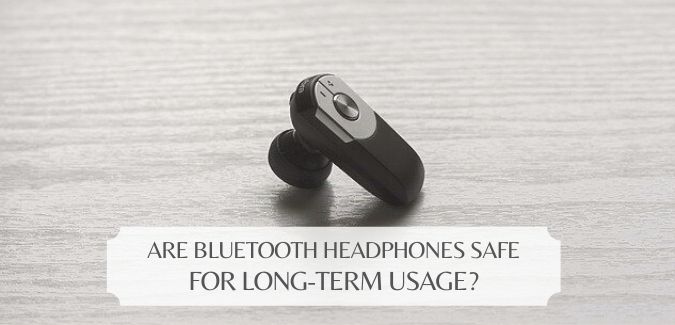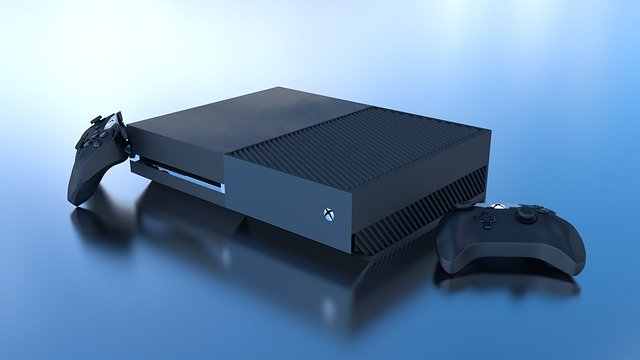
Bluetooth Headphones far from being a mere trend are now a norm and essential gadget for most people. Still, concerns are raised about the safety of such devices.
Any Bluetooth devices emit non-ionizing radiation in small doses and exposure to such small amounts of low-frequency radiation is not harmful to the body. The problem often resides in other health implications.
Yet, with a recommended amount of only five minutes per day at 100% loudness, how safe are Bluetooth Headphones for Long Time Usage?
Bluetooth Headphones: The Internal Operation
Wireless technology primarily employs the use of infrared or radio signals to transmit data over a range of distances from a source. Bluetooth Headphones do just the same thing!
A small microchip hardwired with Bluetooth software is mounted into transmitters such as mobile phones. This chip allows for the successful pairing of devices working with Bluetooth technology and is also responsible for the transmission of EM signals to the receiving device.
Low-powered radio signals are emitted from the transmitter and then travel through the air into the headphones. These signals of low frequency are detected by the integrated radio receiver in the headphones which processes and converts this radio signal into sound which we can hear.
Receivers, that is the headsets, are battery-reliant. Small batteries are mounted onto the headphones and need to be recharged after use.
It is worthy to note that Bluetooth headphones’ battery allows for prolonged use as the battery life lasts relatively long: 20 hours on a single charge.
Benefits Of Using Bluetooth Headphones
Wireless headphones have undoubtedly facilitated our lives! Long gone are the tangled and messy wires of earphones. The mobility brought by Bluetooth headphones is much appreciated and is one of the main reasons people are making the shift from traditional wired earphones to wireless ones.
Also, operational coverage over large distances is made possible. The Class 2 headsets operate on over 33 feet while Class 1 ones go up to an astounding 330 feet (100 m from the source).
Furthermore, the stability of the Bluetooth connection is a real game-changer. No need to worry about poor connection as compared to other wireless transmissions modus operandi.
There is also the complete elimination of disturbing static noises produced by the movement of electrons in wires. On another note, the throughput of the sound is fast which subsequently renders a better and crisper sound output in general.
What’s more, Bluetooth might well become the next industry standard. The use of Bluetooth headsets in areas ranging from telecommunication to food delivery services is changing the business and tech worlds more than ever before.
Almost every business venture is considering adopting a communication line based on wireless communication tools, notably Bluetooth. As a result, engineers are compelled to improve and perfect the Bluetooth technology.
Safety Concerns
Bluetooth devices, like cell phones, emit nonionizing electromagnetic radiation which, when in intense and direct contact with might be detrimental to our health.
However, the amount of such EMR coming from Bluetooth gear is not consequential at all when used with moderation.
The concern resides with pregnant women who might be more at risk than the average human being. According to research conducted by the NCBI, pregnant women are more likely to have miscarriages after being exposed to high levels of nonionizing radiation.
Added to this, a study has gathered substantial proof that children born of women highly exposed to nonionizing EMR have a higher risk of developing ADHD.
In a time when brain health and mental health are widely talked about and valued, EMR could cause dissonance between the application of technology and human health.
Moreover, exposure to nonionizing radiation might be the cause of brain tumors as suggested by the National Toxicology Program. The stakes of such consequences are high given the widespread usage of Bluetooth Headphones.
Also, these EMR might potentially be linked and have a direct correlation to certain types of cancers, especially in the brain.
While cell phone usage only does not spark an increase in cancerous cells, the added effects of the EMR emitted from Bluetooth Headsets might lead to more serious health complications.
What About My Hearing?
Hearing problems are recurrent nowadays. Human audition is threatened more than ever by ultra-loud speakers and headphones. Approximately 15% of American adults report having some trouble hearing according to the CDC.
It is estimated that 1 in 5 teenagers will suffer from some type of hearing impairment due to the prolonged use of headphones.
Indeed, with Bluetooth headsets having higher sound quality, most people are tempted to listen at maximum volume for extended periods of time instead of the recommended 60% volume for one hour only.
The issue is more prominent and dangerous to younger children(8-11 years old) since hearing loss often entails delays in speech and language development. Moreover, keeping wireless headphones inside one’s ears when not in use increases the bacterial flora in the ear.
Bacterial growth on a headset worn for approximately an hour increases by tenfold. Some of these bacteria are normally found in the outer ear canal but, some are foreign ones and can cause ear infections.
Consequently, damage to the eardrums and ear canal is irreversible. Not to mention the pain experienced by an infection of the ear canal.
Are They Safe For Long-term Usage?
Yes, with moderation. Bluetooth technology has been around since 1989 and no abnormal increase in health issues has been noted to result from the use of it.
Bluetooth headsets emit less EMR than cell phones in general hence, they are safer to use for the average adults. However, prevention is better than cure.
Pregnant women are advised to refrain from using Bluetooth headphones during gestation and nursing periods to protect the health of their children. Rather, make use of speakers to listen to audio tracks during pregnancy.
An optimum usage and increased safety come from the additional use of electromagnetic shielding products.
As to hearing loss, Bluetooth headphones are completely safe for long time usage provided the volume is reasonable to ensure a good enough experience while also being health-conscious.
As a rule of thumb, the 60/60 rule is the way to go: 60% volume for only 60 minutes daily. Minimizing daily usage of Bluetooth headphones not only maintains our ear’s health but also allows for safer prolonged usage.


